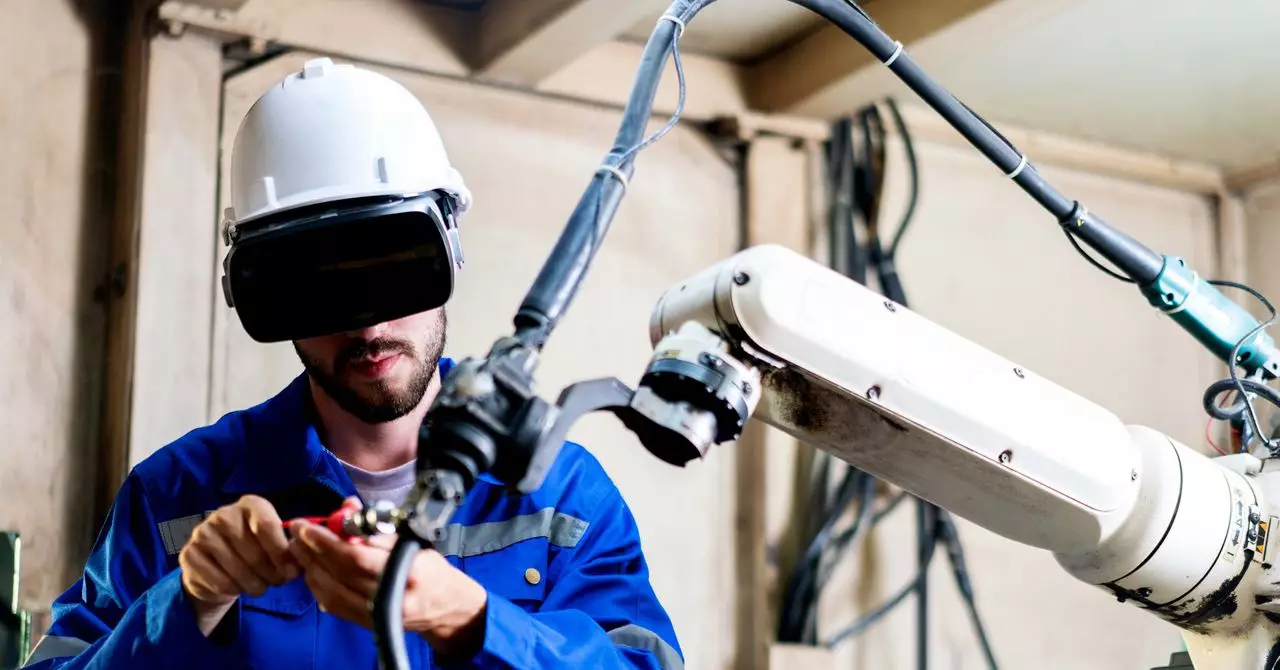Industrial manufacturing has long been synonymous with labor-intensive processes, physical trials, and costly errors. Traditionally, when automobile giants like BMW embarked on creating a new factory, the prototyping phase often involved physically pushing an entire car chassis through the production line. This laborious endeavor was necessary to determine potential bottlenecks, and more often than not, resulted in wasted resources and time. However, thanks to the advancements categorized under the industrial metaverse, this archaic methodology is rapidly being supplanted by sophisticated digital technologies.
Imagine a scenario where engineers no longer need to physically interact with each component of a production line; instead, they can leverage a simulated environment that mirrors reality. With the ability to generate 3D models and test them within a digital twin of a factory, potential flaws are identified and rectified long before any construction begins. This transformative approach not only enhances productivity but significantly reduces the costs associated with trial-and-error processes prevalent in traditional manufacturing.
The Metaverse: A Game Changer in Industrial Practices
While the consumer-oriented version of the metaverse, which involves virtual social interactions, has struggled to ignite widespread excitement, the industrial metaverse is on the brink of a revolution. Recent reports project that the industrial metaverse could be valued at a staggering $100 billion by 2030, revealing its immense potential. This shift dovetails with the evolving nature of manufacturing and technology. Technologies such as simulations, augmented reality, and spatial computing are converging to create a new operational paradigm that empowers companies to seamlessly integrate digital and physical realms.
Deloitte’s Varvn Aryacetas astutely reinterprets the metaverse not merely as a digital playground, but as an advanced mechanism of spatial computing that connects real-world operations with digital innovations. By utilizing virtual reality for training, designing digital products, and simulating physical environments, businesses can radically transform their operational strategies. This approach fosters a culture of innovation, allowing teams to collaborate on designs and processes in ways previously unimaginable.
Nvidia and the Rise of Omniverse
One exemplary player in this emerging industrial landscape is Nvidia. Best known for its graphics processing units (GPUs) in gaming, the company has now pivoted its focus toward the industrial metaverse with the launch of its Omniverse platform. This suite of tools is designed to create realistic simulations that enhance automation and operational infrastructure. Rev Lebaredian, Nvidia’s vice president of simulation technology, underscores the significance of representing the real world through a computer simulation, emphasizing its vital role in developing autonomous systems.
Nvidia’s Omniverse offers unparalleled utility across industries, enabling diverse applications such as warehouse simulations for Amazon, where robots are trained in a virtual environment before they ever step foot on the warehouse floor. Additionally, Lowe’s explores new store layouts in an efficient digital setting, while iconic firms like Zaha Hadid Architects utilize the platform for seamless remote collaboration on complex projects.
BMW: Leading the Charge in Virtual Manufacturing
BMW stands as a staunch advocate for the industrial metaverse, having established virtual models across all its sites, including their latest factory in Debrecen, Hungary. The approach taken by BMW is meticulous; the company fills its virtual factories with 3D models of vehicles, machinery, and even human operators, creating a rich digital ecosystem. This is facilitated through the use of the Universal Scene Description (OpenUSD) format, a technology initially developed by Pixar, allowing for extensive flexibility in digital modeling.
Matthias Mayr, a virtual factory specialist at BMW, eloquently captures the intricacy of this process. He likens navigating a comprehensive factory model to traversing a real-world facility that could take upwards of thirty minutes to walk across. This visualization experience is simplified through a user-friendly interface that allows stakeholders to explore their digital environment effortlessly.
In a world where the boundaries between digital and physical are increasingly blurred, emotional industries like manufacturing are discovering new pathways to efficiency and creativity. The implications of this shift are both profound and promising, heralding a future characterized by innovation and strategic foresight. As businesses continue to embrace the industrial metaverse, we may very well be witnessing the dawn of a new era in efficiency and collaboration—one where virtual possibilities reshape the fabric of industrial processes.

